Let’s face it, Google Ads aren’t very sexy.
Read any article about the newest darlings of the ecommerce world, and Facebook Ads, Snap Ads and even TikTok Ads, take up most of the coverage.
But if you look at the stats for the top acquisition channels, paid search has held its position for a long time.
So behind the scenes, most of these brands are quietly cranking away on Google Ads.
And in this article, I’ll look at 5 interesting case studies of how these top ecommerce brands use Google Ads.
Table of Contents
The Uniting Factor
Looking at the Google Ads strategy that the brands in this article use, it’s all pretty similar.
Few brands grow thanks to Google Ads (except for #5).
Most of them generate the demand somewhere else, and then use Google Ads to harvest those customers when they are ready.
But the way they do that is a little different for each one. Some focus on Shoppings Ads, others on YouTube Ads and others are using a mix of all the campaign types.
How Away Travel Captures Unbranded Traffic
Filled with coffers full of venture capital, Away Travel has grown like crazy.
And the luggage brand has put that money to good use, because in only a few years, they’ve managed to grab a big part of the market:
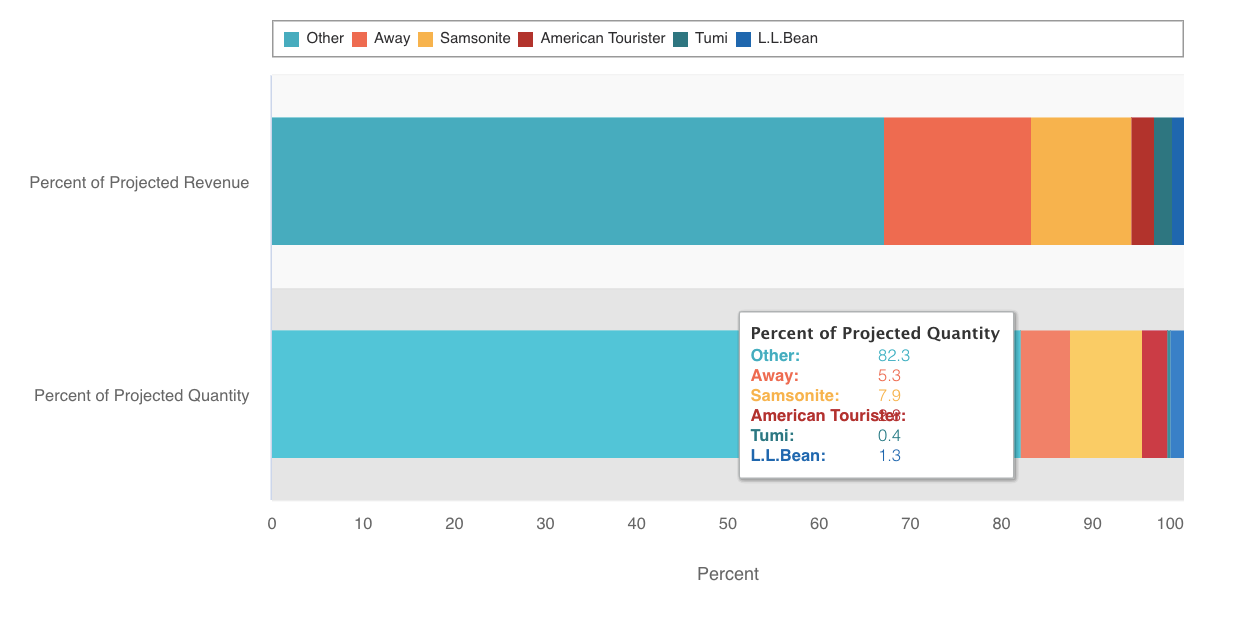
These investments in brand building also pay off in different ways.
About 70% of all Search Ads clicks for Away, worth about $35,000 per month, comes from unbranded paid search.
While any brand is able to advertise on these terms, the bottleneck with unbranded campaigns is the ability to convert customers at a high enough rate.
That’s why most stores would like this part of their campaigns to grow, but few can. But as one of the top brands, Away can pull it off and tap into this huge search volume, and do it at scale.
Learn more about the Away’s Google Ads strategy.
A View Into Campaign Structure of Glossier
Glossier sells cosmetics and skincare products and has really taken off these last couple of years.
When I analysed what they were doing with Google Ads, I managed to get some pretty interesting insights into how they were structuring their campaigns.
While account structure might sounds really boring but it actually is one of the most powerful things in a Google Ads account.
So let’s look at how Glossier structured its Google Search Ads campaigns.
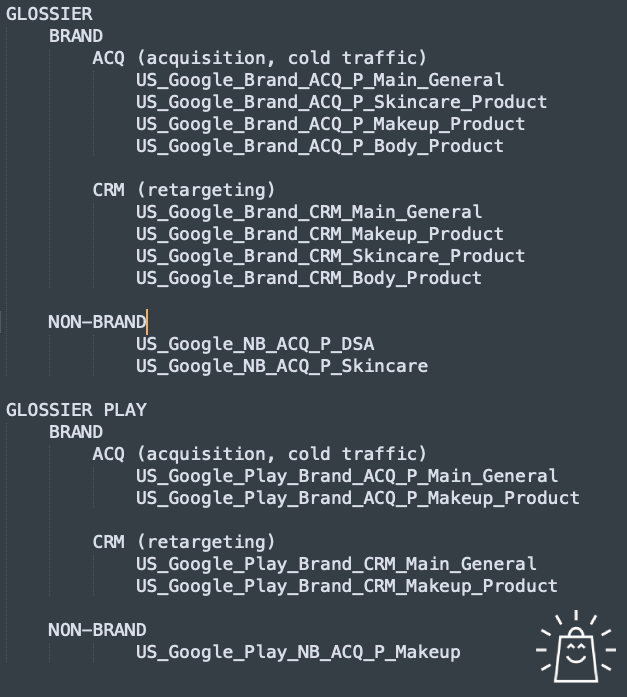
The company runs 2 groups of campaigns, one for each of its sub-brands: Glossier and Glossier Play.
Each group, has a set of branded campaigns, and one for all other search queries.
Then it splits the branded into ACQ and CRM.
My guess is that first type (ACQ) is a prospecting campaign, targeting people that haven’t been to the site. The other type (CRM) targets people that have been to the website, or perhaps even existing customers that are being targeted with the Custom Match feature.
For the non-branded campaigns, it uses a campaign that targets a specific product category (like skincare) and a Dynamic Search Ads (DSA) campaign to capture all other traffic.
Then Glossier duplicates this structure for other countries it advertises in like the UK or Canada.
To read the full breakdown, click here.
English Only: How MVMT Advertises Internationally
MVMT sells watches and other accessories.
What’s interesting about them is that they operate worldwide. There are plenty of brands doing that, but few are running ads in all those countries.
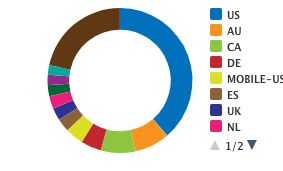
Most US or UK brands don’t actively advertise in non-English markets to avoid the language problems that can occur. Being from Belgium, a tiny country with 3 official languages (and one unofficial), I know the difficulties that creep up when you add multi-language support.
But MVMT forgoes all those things and just runs their ads in English to their English website in all those markets. No translations or currency conversions.
They have this the last couple of years, so this simple strategy seems to be working!
Check this in-depth breakdown of their Google Ads to learn more about what they are doing.
How Allbirds Confuses Match Types
In this next Google Ads case study, we look at Allbirds, is a sustainable shoe brand.
They’ve worked hard in the last couple of years fighting off competitors and further building out their product catalog.
My estimate was that they were spending around $35,600 / mo on Google Ads.
But even with such an ad budget, things can go wrong. Mistakes with keyword match types can be costly, especially in non-branded Search campaigns.
In fact, I found a single search term that is useless to Allbirds and it’s costing them $700/mo:
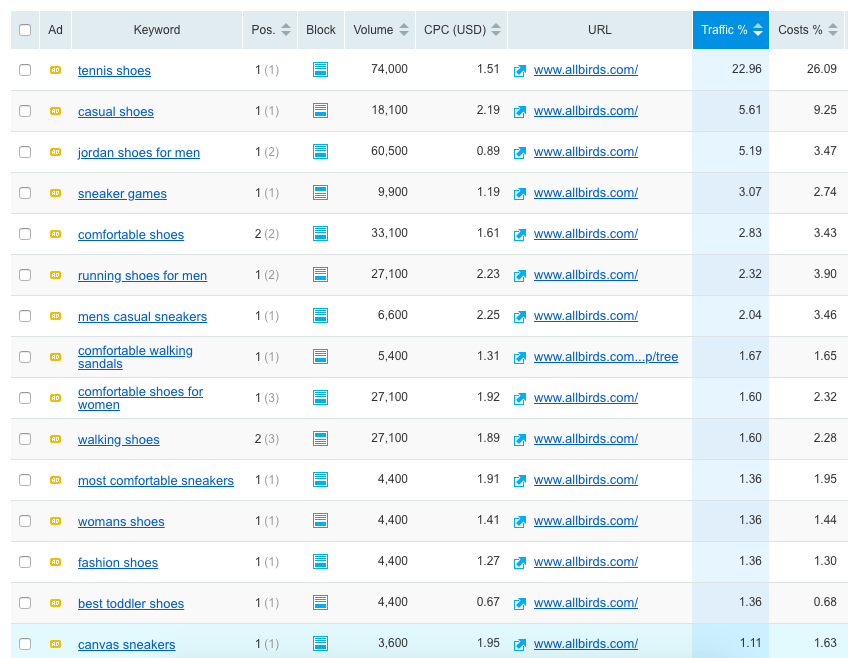
From this list it doesn’t appear to be the only search terms that should be in their campaigns. So keeping a close eye on your Search terms report is essential, not matter how big you are.
This only is a small part of what Allbirds is doing, you can read the full details here.
How Purple Grows Demand With YouTube Ads
Branded search is the most valuable campaign type on Google Ads. Every business would like more branded searches and clicks, but the number of searches is limited to how well people know your brand. And for most businesses, that awareness only grows very gradually.
Purple Mattresses has figured out how to make that number go up fast.
It has done so by focusing on YouTube Ads. And by investing heavily in creating funny and distinctive video ads, and by running them like crazy. This has managed to drive branded search:
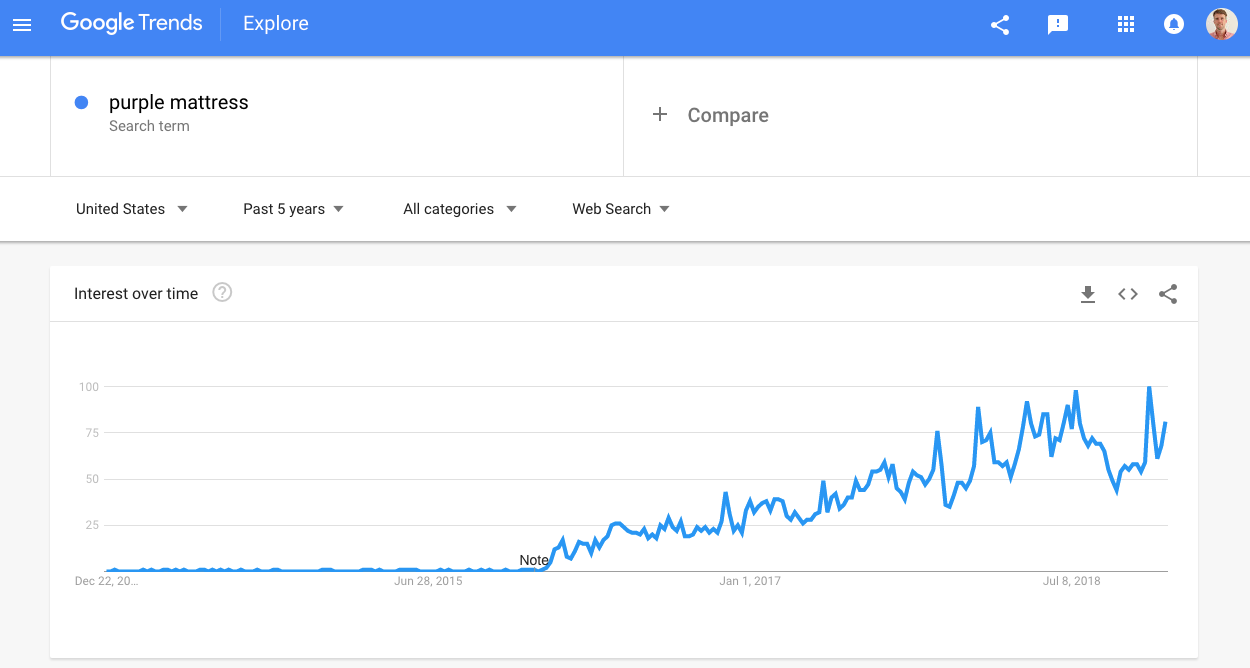
There are a ton of interesting lessons to take away from the Purple story, so be sure to check all the details!
Creating Your Own Google Ads Case Study
I hope you liked these examples of big brands using Google Ads.
They should have given you some ideas about what is possible for your brand.
So if you’re still deciding whether or not to go ahead with Google Ads, here are your next steps:
- Take the Google Ads Test to see if your store and products are a good fit for the channel
- Read our Google Ads For Ecommerce Guide to find out where to start
- Grab one of our courses to learn the proven framework that I use to get results for my clients
- $$$$
